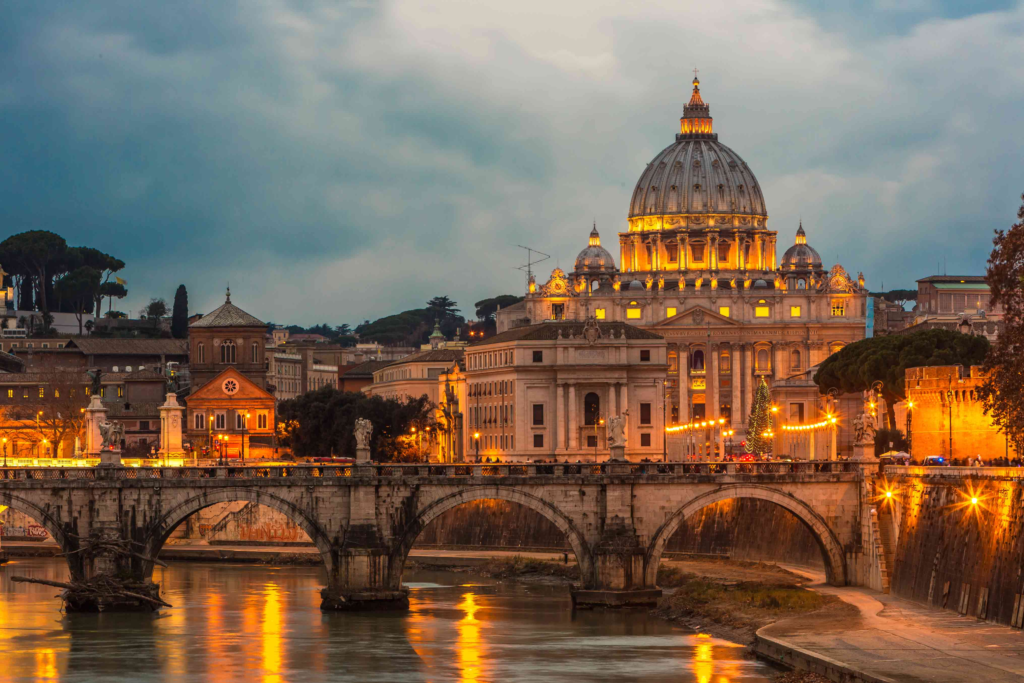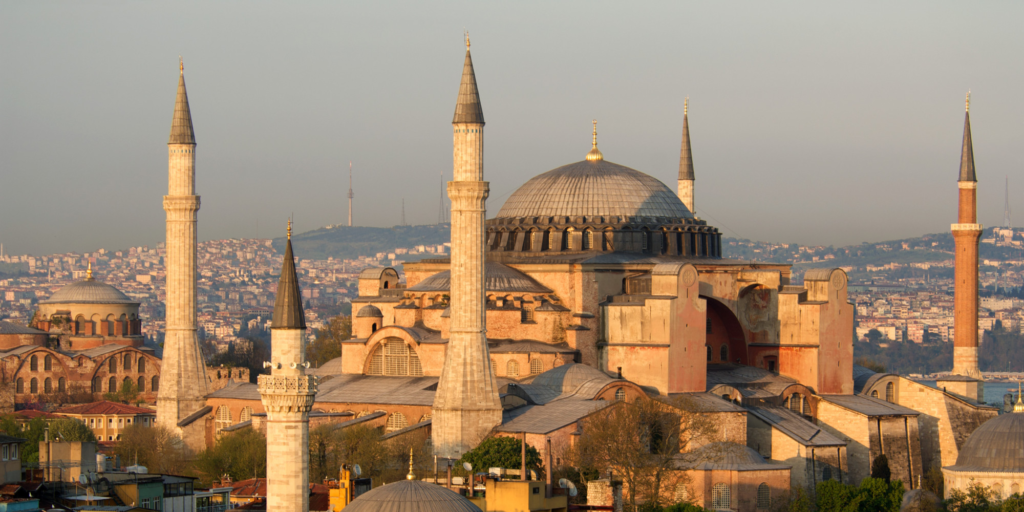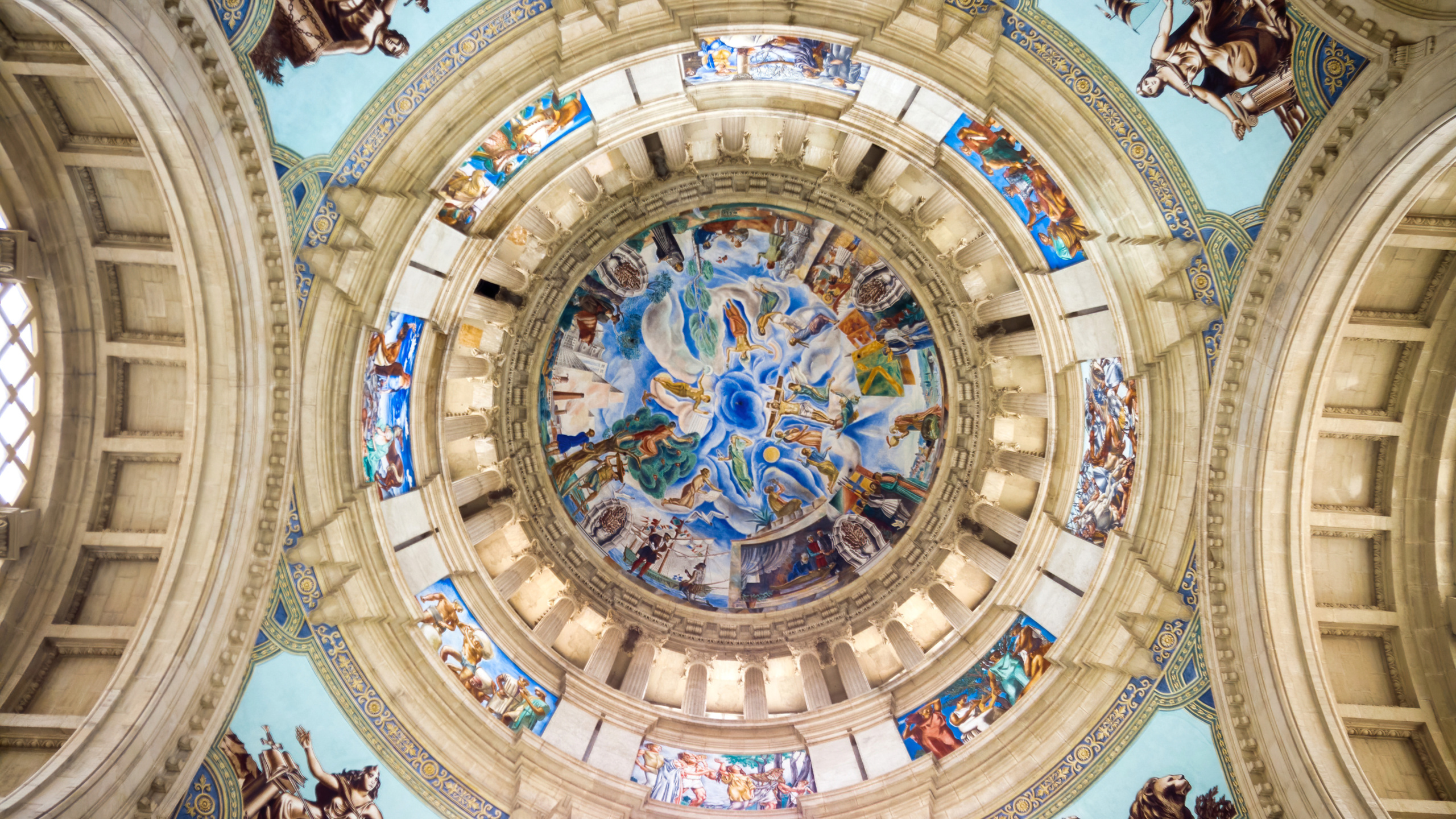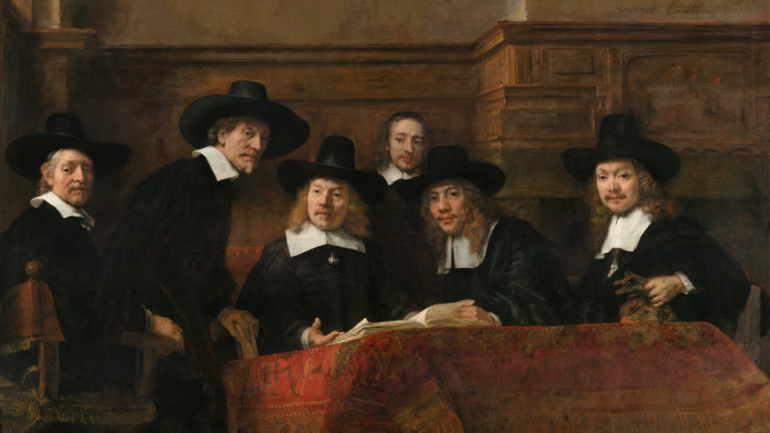To truly understand the next 1,500 years of Western art history, one must have a solid and in-depth knowledge of Christianity as a foundation.
When people generally refer to “Western art,” they often mean highly recognizable artworks like the Mona Lisa or Michelangelo’s David. However, these represent only Western European art and are vastly different from Eastern European art. Today, let’s explore the origins of these differences.
The Great Schism: The Source of Artistic Differences in Europe
- Artistic styles within Europe vary significantly and can generally be divided into Eastern and Western European styles. This major divergence in artistic expression originates primarily from the Great Schism.
- The reasons for the Great Schism can be traced back to the division of the Eastern and Western Roman Empires, which itself was influenced by Christianity’s changing status in the Roman Empire. Under Emperor Constantine, Christianity was legalized, allowing everyone within Roman territory to practice it. In 395 CE, Emperor Theodosius made Christianity the state religion of the Roman Empire, gradually diminishing the role of other religions.
- During his reign, Constantine moved the capital of the Roman Empire to Constantinople. By this time, the Empire was too vast for one ruler to govern effectively, so Theodosius became the last emperor to rule a united Roman Empire. Before his death, he divided the empire between his two sons, establishing the Eastern and Western Roman Empires.
- This division led to a struggle for religious orthodoxy. The Roman Empire had established five major bishoprics: Rome, Constantinople, Alexandria (now in Egypt), Antioch (now in Syria), and Jerusalem. The Eastern Roman Empire considered Constantinople to be the center of orthodoxy, while the Western Roman Empire believed Rome held that position.
- The Western Empire claimed legitimacy due to St. Peter, a disciple of Jesus, who was considered the first Pope of Christianity in Rome. With such a revered figure as its foundation, the Western Roman Empire asserted itself as the most orthodox. In contrast, the Eastern Empire believed that since Christianity had become the state religion, orthodoxy should follow the emperor. Therefore, the bishopric of the capital, now Constantinople, should wield greater authority.
- The invasion of Northern barbarian tribes further exacerbated the split between the Eastern and Western Churches. In 476 CE, the Western Roman Empire fell to three main barbarian forces: the Germanic, Slavic, and Celtic tribes. However, these tribes eventually adopted Christianity, which made the Eastern Roman Empire increasingly view Western Christianity as less pure, deepening the divide over nearly 600 years.
- In 1053, tensions between the Eastern and Western Churches escalated into the Great Schism. The Byzantine Empire expelled all Latin churches from its territory, officially severing ties with the Western Roman Church. Though the Pope in the West sought reconciliation and sent a delegation to negotiate, the Pope died during the process, casting doubt on the delegation’s legitimacy and stalling negotiations.
- The Western delegation then left an excommunication decree in the Hagia Sophia, expelling the Eastern Romans from Christianity. In retaliation, the Byzantine clergy issued a decree expelling the Western Romans. Thus, the Eastern and Western Roman Churches formally parted ways, each regarding the other as heretical.
- After the Schism, the Western Church became known as the Catholic Church, meaning “universal,” emphasizing its inclusivity of all Christians. The Eastern Church became known as the Orthodox Church, officially the Eastern Orthodox Church of the Roman Empire, highlighting its pure lineage. The two churches had no formal contact until 2016, when Pope Francis and Patriarch Kirill of Russia held a “once-in-a-millennium” meeting in neutral Cuba.
- The Schism fundamentally changed religious artistic expression in both regions. A core tenet of Christian doctrine, the Ten Commandments, includes principles such as “Thou shalt have no other gods” and “Thou shalt not make unto thee any graven image.” After the Schism, these principles were interpreted quite differently in the East and West.
- At the time, widespread illiteracy posed a challenge for preaching. While idol worship was forbidden, it also discouraged the use of visual aids like statues and paintings in conveying religious teachings. The Eastern Church adhered strictly to these commandments, producing highly regulated holy images in churches that, similar to ancient Egyptian art, emphasized information transmission over artistic freedom.
- With their creativity restricted in terms of line and form, artists in the Byzantine Empire, following Orthodox tradition, focused intently on color, resulting in dazzlingly ornate art filled with gold and intricate designs, though figures often appeared stiff and formulaic.
- Meanwhile, the Western Church adopted a different approach, pushing artistic boundaries without crossing them. This was thanks in part to Pope Gregory I, who created the Gregorian Chant, an early form of classical music for promoting Christian teachings. However, he found music alone insufficient for conveying Christian ideals and advocated using paintings for religious promotion. This ushered in a rich tradition of religious art in the Catholic regions of Western Europe during the Middle Ages.

St. Peter’s Basilica, also known as Saint Peter’s Basilica or the Vatican Basilica, was designed by Michelangelo and is located in Vatican City. It is a Catholic papal basilica, built between 1506 and 1626, and is one of the most important symbols of the Catholic Church.

The Eastern Orthodox Hagia Sophia

Pope Francis, the head of the Catholic Church

Kirill I, Patriarch of the Russian Orthodox Church
Is the “purgatory on earth” worse than hell?
We often describe extremely terrible situations or places as a “purgatory on earth.” It seems that the word “purgatory” with its connotation of “refining” implies an even more dreadful place than hell itself. However, in fact, purgatory is not dreadful at all. In Catholic theology, the world beyond is divided into three realms: besides heaven and hell, there is an intermediary realm called purgatory, which translates to “cleansing” or “purifying.” Those who have committed minor sins and are not yet ready for heaven go to purgatory to “make up for” their mistakes. After purification, they can still enter heaven. But hell is different. Those who have committed grave sins are sent to hell, and once there, there is no return.


